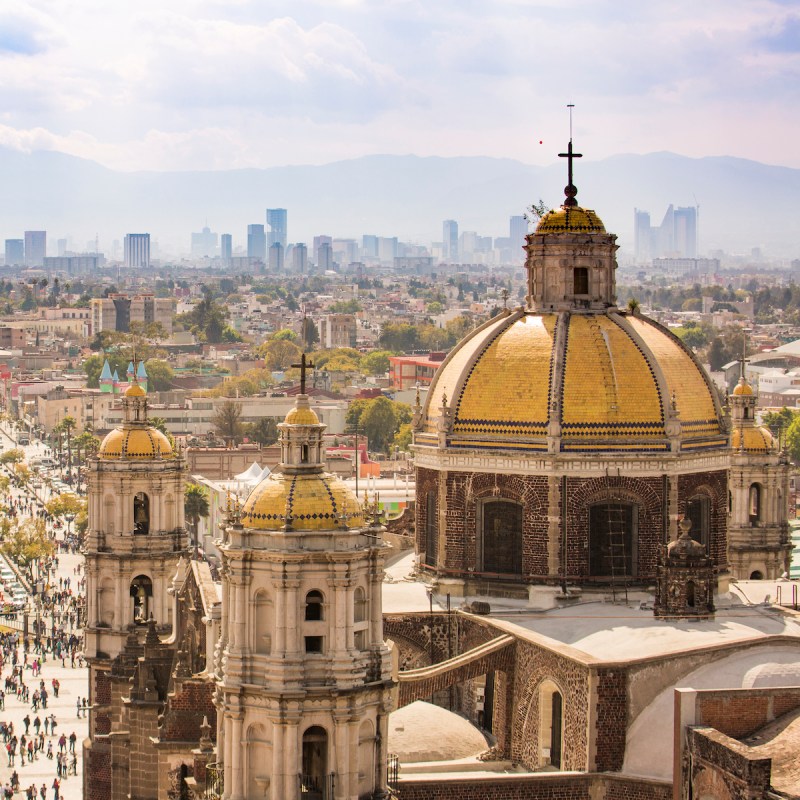
Mexico is one of the most popular international destinations for American travelers. Cancun, Tulum, and Playa del Carmen particularly draw high numbers of tourists from the U.S.
Videos by TravelAwaits
However, as the spring break and Easter travel season approaches, anyone planning a trip to Mexico this spring must reckon with the sobering news of four Americans who were recently attacked by gunmen while traveling in Mexico.
The four individuals had traveled to Mexico so one could have a medical procedure. Then, in the city of Matamoros in Tamaulipas state, just south of Brownsville, Texas, the four were shot at and kidnapped. Two of them were killed in the gunfire. The other two, one of whom was also shot, have now been returned to the U.S., according to NBC News.
The U.S. Embassy & Consulates in Mexico issued a statement reminding U.S. citizens that it previously issued a travel advisory listing Tamaulipas state as a “Level 4: Do Not Travel” area in Mexico.
The natural inclination for anyone planning to travel to Mexico, as well as for family and friends of those prospective travelers, is now to question whether or not it’s safe to visit Mexico.
Zachary Rabinor, founder and CEO of the travel company Journey Mexico, says it’s important to remember that the Americans were killed and kidnapped a long distance from popular tourist destinations in Mexico.
“To put things in perspective, Matamoros is about 1,360 miles away from Cancun,” Rabinor said, according to CNN. “That’s about the equivalent distance from the Texas side of the border to Chicago, Illinois.”
Jaime Lopez-Aranda, a senior security manager at travel risk management firm International SOS, agrees that popular resort areas are still fairly safe.
“It is relatively safe for travelers to head to tourist destinations and major urban centers such as Mexico City, Guadalajara, and Monterrey,” Lopez-Aranda told CNN Travel.
Importantly, the U.S. State Department has issued a number of advisories for U.S. citizens traveling to various Mexican states in recent weeks. Now, as violent crime and kidnapping rates increase across Mexico, Americans considering travel to all but two of the states in Mexico should be aware of renewed and increased warnings, the State Department cautions.
“Violent crime — such as homicide, kidnapping, carjacking, and robbery — is widespread and common in Mexico,” the State Department explains.
“The U.S. government has limited ability to provide emergency services to U.S. citizens in many areas of Mexico, as travel by U.S. government employees to certain areas is prohibited or restricted,” the State Department continues. “In many states, local emergency services are limited outside the state capital or major cities.”
Here are the State Department’s travel advisories for each of Mexico’s states.
Do Not Travel To
The State Department advises U.S. citizens to not travel to five states in Mexico due to increasing levels of crime and kidnapping.
Those states are Colima (where Manzanillo is located), Michoacan, Sinaloa (where Mazatlán is located), Tamaulipas, and Zacatecas (home to Zacatecas City).
Guerrero — where Acapulco, Zihuatanejo, and Ixtapa are located — is also on the State Department’s “Do Not Travel” list because crime is widespread in those areas.
Reconsider Travel To
The State Department advises U.S. citizens to “reconsider travel” to five states in Mexico due to crime and kidnapping.
Those states are Baja California (where Tijuana is located), Chihuahua, Guanajuato (where Guanajuato City is located), Jalisco (home to Guadalajara and Puerto Vallarta), and Sonora.
The states of Durango and Morelos are also on the State Department’s “Reconsider Travel To” list due to high crime rates.
Exercise Increased Caution When Traveling To
The State Department advises U.S. citizens to “exercise increased caution when traveling to” 17 areas of Mexico, primarily due to crime rates but also due to the threat of kidnapping in some places.
Those states are Aguascalientes, Baja California Sur (where Cabo San Lucas, San Jose del Cabo, and La Paz are located), Chiapas, Coahuila, Hidalgo, Mexico State, Nayarit, Nuevo Leon, Oaxaca (home of Oaxaca City and Huatulco), Puebla, Queretaro, Quintana Roo (where Cancun, Cozumel, Tulum, and Riviera Maya are located), San Luis Potosi, Tabasco, Tlaxcala, and Veracruz.
Mexico City is also on the list due to high crime rates.
Exercise Normal Precautions When Traveling To
The State Department advises U.S. citizens to “exercise normal precautions when traveling to” Campeche and Yucatan, where Chichen Itza and Merida are located.
Know Before You Go
If you decide to travel to Mexico, the State Department offers some guidance.
“Exercise increased caution when visiting local bars, nightclubs, and casinos,” the State Department recommends. “Do not display signs of wealth, such as wearing expensive watches or jewelry. Be extra vigilant when visiting banks or ATMs.”
U.S. citizens with an emergency are also reminded that they can call the U.S. Embassy & Consulates in Mexico for help.
U.S. citizens on their way to Mexico are also advised to make a note of U.S. Embassy & Consulates emergency contacts in the area where they will be traveling.
Finally, the State Department recommends international travelers enroll in STEP, the Smart Traveler Enrollment Program.
Doing so enables U.S. citizens and nationals traveling and living abroad to enroll their trip with the nearest U.S. Embassy or consulate. That way travelers can receive important information from the Embassy about safety conditions in their destination country, make it easy for the U.S. Embassy to contact travelers in the event of an emergency, and also make it easier for family and friends to contact travelers in case of an emergency.
For more about changing travel conditions in countries around the world, be sure to read our Travel News content, including:
